Pruning pears in spring: forming a young tree
With the onset of spring, a hot season begins in the garden. Experienced gardeners know that it is important not to miss the very moment when it is necessary to prune fruit trees in order for them to produce a good harvest. Pear was no exception here. She loves timely and correct pruning. Such care behind the tree will provide good yields, protection from diseases and pests, and will also contribute to the normal growth of the tree.
Content:
- When to start pruning a pear
- Features of pruning pears in spring
- How to bring fruiting closer with pruning?
When to start pruning a pear
Pear is a demanding tree in all respects. She likes fertile and moist enough soiland also cannot stand the shadow. It is better that the pear grows on the sunny side, in the shade it does not form buds. Therefore, pruning of a pear, first of all, is carried out in order to lighten the crown. The pear is very sensitive to temperature changes, so even a slight cold snap in early spring can lead to the death of flowers and the entire crop.
It is important to start pruning the pear in the spring, when severe frosts have already passed, but always before the start of sap flow. Usually this is the end of March - beginning of April. It is undesirable to prune the pear in the fall. This is due to the sensitivity of the tree to frost.
To make the pruning painless for the tree, you need to choose a high-quality pruner. It must be sharp. It is recommended to cover the sections with the "Runnet" preparation. They can treat all damage to the bark until they are completely tightened.
If your pear is young, you need to prune it to form the crown correctly. In the first year, the central trunk of such a pear is cut off by one quarter of the length. This will stimulate the branching of the crown. The rest of the side shoots should be cut above the first bud. Also, in order not to overload the young tree with the harvest, it is necessary to remove some of the buds. In this case, fruiting will be of better quality, and the pear will more easily endure the winter.
After a year, it will be necessary to shorten the top of the central trunk by 25 cm, and cut the branches by 5-7 cm. The pear looks like a Christmas tree, its upper branches should be shorter than the lower ones.
Features of pruning pears in spring
In order not to harm the tree, you need to know the basic rules and features of pruning in the spring. Many inexperienced gardeners are deluded into thinking that pruning a tree is not doing it any good. This opinion is absolutely not true. Any fruit tree needs to be pruned to provide it with more light. After all, the branches inside the crown lack sun and heat. It becomes the reason for the fall yield... In addition, an uncircumcised tree begins to hurt more often, it cannot tolerate frost.
Correct pruning of a pear is carried out in several stages. There are three types of pruning: formative, sanitary and maintenance.
Sanitary pruning aims to remove diseased and dead branches. Do this before the start of the growing season to provide new branches with more light.
The main pruning of pears takes place from March to April. During this period, large branches are shortened so as not to overload them with crops. This is a supportive pruning.
Experts advise using two methods: shortening the shoots and cutting into a ring. With the first method, the growth of lateral shoots and the awakening of the buds below the cut are accelerated.The second method is to cut the branch with a circular bead. Such cuts are quickly tightened by the bark.
Whichever method you use, it is important not to leave stumps on the tree, and also to process the cuts so that pests do not get under the bark of the pear through them and the tree does not get sick.
How to bring fruiting closer with pruning?
All fruit trees begin to bear fruit 3-7 years after planting. Pears give their first harvest only after 12 years. Therefore, all gardeners are concerned about the question: how to accelerate the fruiting process?
First, annual pruning will ensure an early harvest. By pruning branches, you provide the tree with light.
The growth of new shoots distracts the tree from fruiting, therefore, in the second half of summer, it is necessary to pinch the growth points. Thanks to this procedure, flower buds are laid, which accelerates the fruiting of the pear.
Various sources advise breaking, cutting, crushing, ringing, or pulling. But all these methods lead to the death of branches. There are effective ways to use early-growing varieties, intermediate insertion, etc.
The method of grafting cuttings with a fruit bud has proven itself well. For this, it is better to use 2-3 year old cuttings, since they already give the first fruits 2-3 years after grafting. Carrying out such a procedure, it is necessary to monitor the purity of the sections, quickly connect the components of the inoculation and follow the binding rules.
High-quality and timely pear care is the basis for a good harvest in the future. Therefore, it is important to know the basics of pruning this fruit tree.



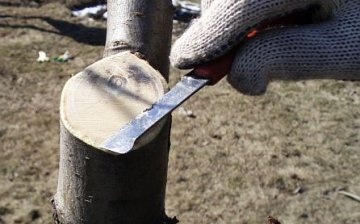
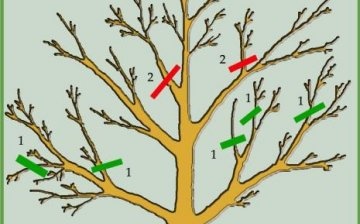
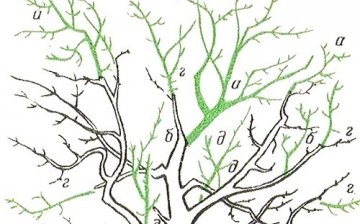
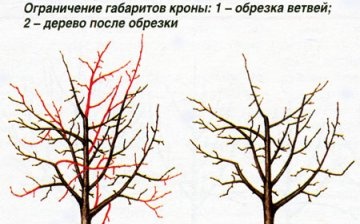




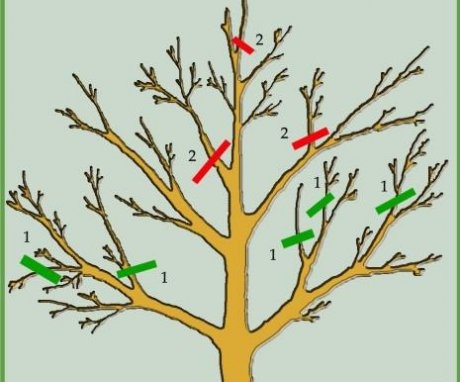
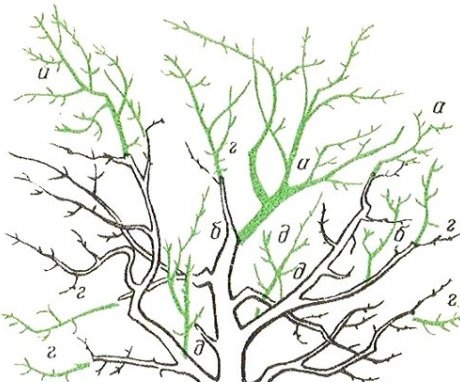
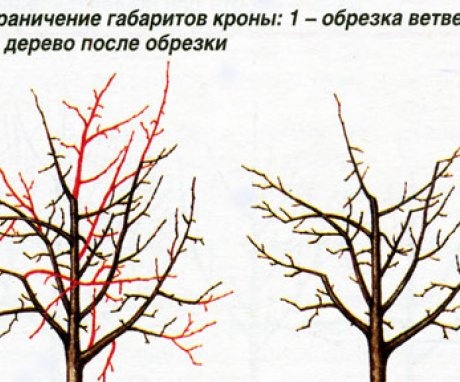
Help to properly prune the pear, when transplanting, the tree is 5 years old
Previously, sometimes I pruned pears in the fall. Then the "kind people" advised me.
But now, which in the spring I am trying to form a crown, cut out the extra thickening branches, and every time it's just a pity to squeeze the secateurs ...
Although, in my heart I understand that pruning the "extra" will only benefit the tree ...